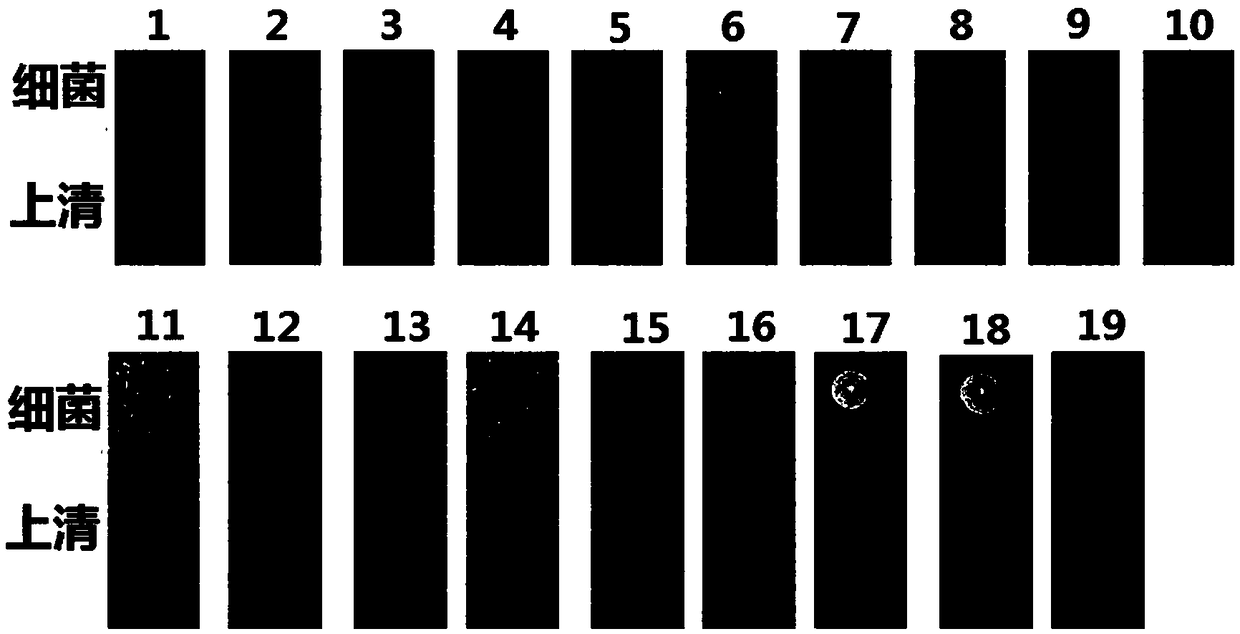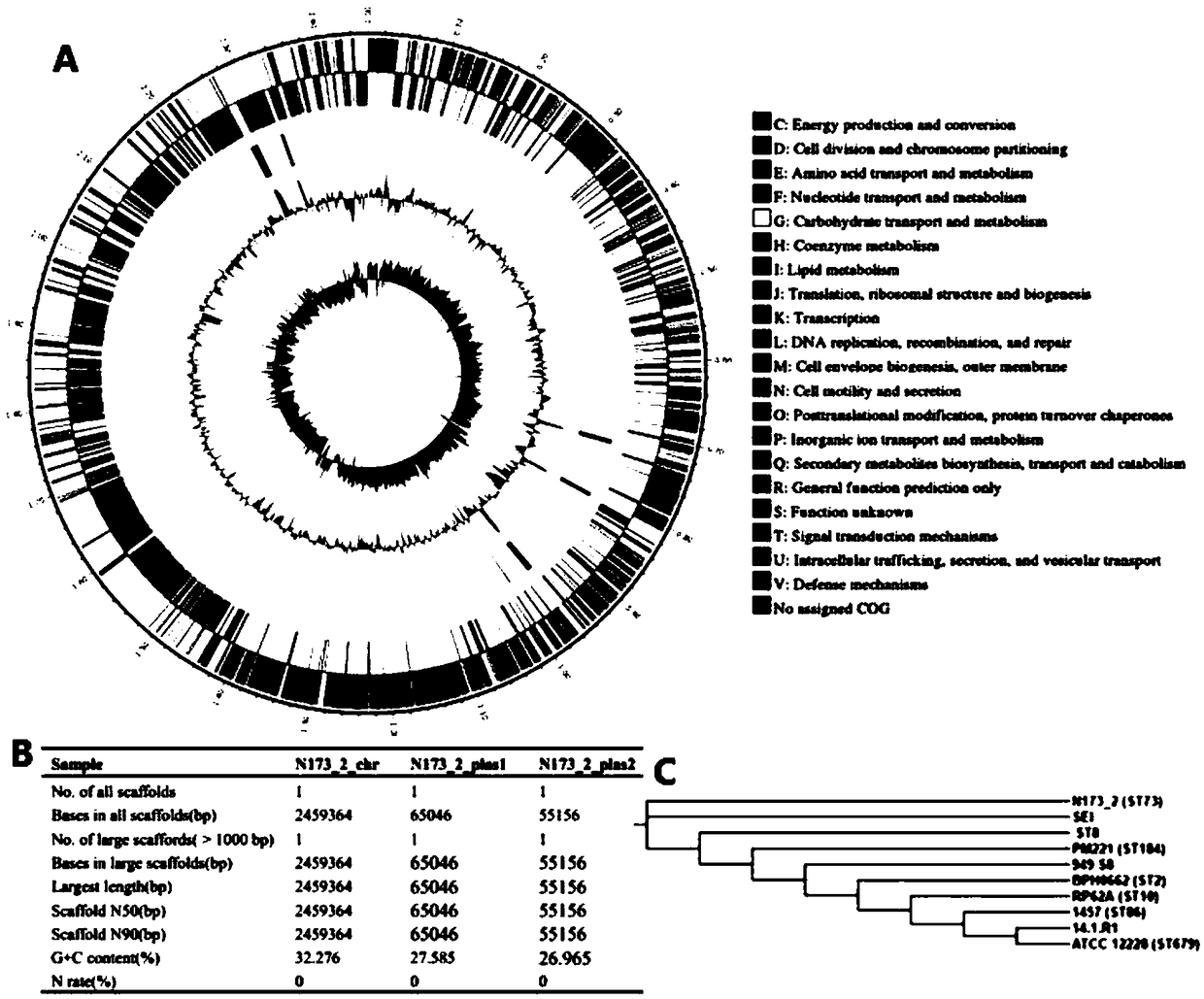Staphylococcus epidermidis with broad-spectrum antibacterial activity for gram-positive drug resistant bacteria as well as screening method and application of staphylococcus epidermidis
A Staphylococcus epidermidis, Gram-positive technology, applied in the field of Staphylococcus epidermidis and its screening, can solve the problems of unreported correlation between Staphylococcus epidermidis and anti-Gram-positive drug-resistant bacteria, and is not easy to drug resistance and difficult to produce , targeted effect
- Summary
- Abstract
- Description
- Claims
- Application Information
AI Technical Summary
Problems solved by technology
Method used
Image
Examples
Embodiment 1
[0029] This embodiment is a screening procedure for Staphylococcus epidermidis with broad-spectrum antibacterial activity against Gram-positive drug-resistant bacteria, which includes:
[0030] Step 1) Perform routine flora culture on the nasal swab samples of 200 males and 200 females aged 18-25 years old with normal physical examination, no previous disease history, and no hospital contact history in the past six months in Shanghai, and 20 monoclonal samples for each sample Identification by MALDI-TOF MS and 16S rRNA gene sequencing. The results of analysis showed that Staphylococcus accounted for 82.0% of the genus-level culturable flora in the nasal cavity of healthy people; further identification of Staphylococcus bacteria found that Staphylococcus epidermidis accounted for 79.8%.
[0031] Step 2) Analyze the pathogenic methicillin-resistant Staphylococcus aureus (MRSA) and macrolide-resistant staphylococcus aureus (MRSA) isolated from different countries, communities and...
Embodiment 2
[0037] In this example, the gene sequencing of Staphylococcus epidermidis N173-2, a molecule with broad-spectrum antibacterial activity of clinical Gram-positive drug-resistant pathogenic bacteria screened in Example 1, was carried out. The result is as follows:
[0038] In this embodiment, the whole genome sequencing analysis of Staphylococcus epidermidis strain N173-2, which produces molecules with broad-spectrum antibacterial activity against clinical Gram-positive drug-resistant pathogens ( figure 2 Part A of the study), it was found that its size was 2459364bp, its G+C content was 32%, its MLST type was ST73, and it contained 4 Prophage (prophage), 3 GI-like regions (genome islands), 2 plasmids, each The sizes of the plasmids were 65046bp and 55156bp ( figure 2 Part B of the above); and the phylogenetic analysis of this bacterium based on the phylogenetic tree of the core SNP of the whole genome was carried out by the kSNP 3.0 software, and it was found that the evolut...
Embodiment 3
[0041] This embodiment is the antibacterial experiment verification of Staphylococcus epidermidis strain N173-2, and it takes Staphylococcus aureus USA300 as an example, and the verification steps are as follows:
[0042] (1) Pick a single clone of Staphylococcus aureus USA300 and inoculate 10 ml of fresh TSB, shake the bacteria overnight at 37°C and 220 rpm.
[0043] (2) Detect the OD600 of the bacteria with a microplate reader, adjust the OD600 of the bacteria to 0.0001 and inoculate them into 50 ml of solid TSB medium, mix well and spread the plates.
[0044] (3) Pick a single clone of the N173-2 strain isolated from the nasal cavity of a healthy person and inoculate it into 10 ml of fresh TSB, shake the bacteria overnight at 37°C and 220 rpm.
[0045] (4) Take 5 μl of the bacterial suspension, the centrifuged supernatant and the precipitate of the bacterial culture and inoculate them on a solid plate containing USA300 bacteria. After drying, place them in a 37°C incubator ...
PUM
 Login to View More
Login to View More Abstract
Description
Claims
Application Information
 Login to View More
Login to View More - R&D
- Intellectual Property
- Life Sciences
- Materials
- Tech Scout
- Unparalleled Data Quality
- Higher Quality Content
- 60% Fewer Hallucinations
Browse by: Latest US Patents, China's latest patents, Technical Efficacy Thesaurus, Application Domain, Technology Topic, Popular Technical Reports.
© 2025 PatSnap. All rights reserved.Legal|Privacy policy|Modern Slavery Act Transparency Statement|Sitemap|About US| Contact US: help@patsnap.com


